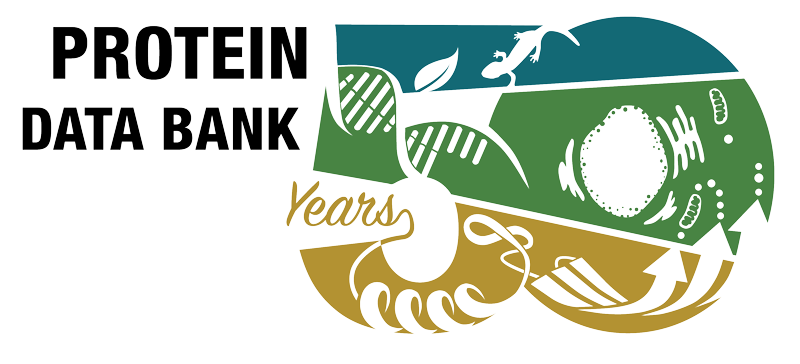Articles - 4jtv mentioned but not cited (10)
- A recommended numbering scheme for influenza A HA subtypes. Burke DF, Smith DJ. PLoS One 9 e112302 (2014)
- Broadly neutralizing antibodies target a haemagglutinin anchor epitope. Guthmiller JJ, Han J, Utset HA, Li L, Lan LY, Henry C, Stamper CT, McMahon M, O'Dell G, Fernández-Quintero ML, Freyn AW, Amanat F, Stovicek O, Gentles L, Richey ST, de la Peña AT, Rosado V, Dugan HL, Zheng NY, Tepora ME, Bitar DJ, Changrob S, Strohmeier S, Huang M, García-Sastre A, Liedl KR, Bloom JD, Nachbagauer R, Palese P, Krammer F, Coughlan L, Ward AB, Wilson PC. Nature 602 314-320 (2022)
- Molecular basis of the receptor binding specificity switch of the hemagglutinins from both the 1918 and 2009 pandemic influenza A viruses by a D225G substitution. Zhang W, Shi Y, Qi J, Gao F, Li Q, Fan Z, Yan J, Gao GF. J Virol 87 5949-5958 (2013)
- First exposure to the pandemic H1N1 virus induced broadly neutralizing antibodies targeting hemagglutinin head epitopes. Guthmiller JJ, Han J, Li L, Freyn AW, Liu STH, Stovicek O, Stamper CT, Dugan HL, Tepora ME, Utset HA, Bitar DJ, Hamel NJ, Changrob S, Zheng NY, Huang M, Krammer F, Nachbagauer R, Palese P, Ward AB, Wilson PC. Sci Transl Med 13 eabg4535 (2021)
- Heterosubtypic Protections against Human-Infecting Avian Influenza Viruses Correlate to Biased Cross-T-Cell Responses. Zhao M, Liu K, Luo J, Tan S, Quan C, Zhang S, Chai Y, Qi J, Li Y, Bi Y, Xiao H, Wong G, Zhou J, Jiang T, Liu W, Yu H, Yan J, Liu Y, Shu Y, Wu G, Wu A, Gao GF, Liu WJ. mBio 9 e01408-18 (2018)
- Characterising viable virus from air exhaled by H1N1 influenza-infected ferrets reveals the importance of haemagglutinin stability for airborne infectivity. Singanayagam A, Zhou J, Elderfield RA, Frise R, Ashcroft J, Galiano M, Miah S, Nicolaou L, Barclay WS. PLoS Pathog 16 e1008362 (2020)
- Combination of M2e peptide with stalk HA epitopes of influenza A virus enhances protective properties of recombinant vaccine. Tsybalova LM, Stepanova LA, Shuklina MA, Mardanova ES, Kotlyarov RY, Potapchuk MV, Petrov SA, Blokhina EA, Ravin NV. PLoS One 13 e0201429 (2018)
- Influence of the Linking Order of Fragments of HA2 and M2e of the influenza A Virus to Flagellin on the Properties of Recombinant Proteins. Stepanova LA, Kotlyarov RY, Shuklina MA, Blochina EA, Sergeeva MV, Potapchuk MV, Kovaleva AA, Ravin NV, Tsybalova LM. Acta Naturae 10 85-94 (2018)
- Librator: a platform for the optimized analysis, design, and expression of mutable influenza viral antigens. Li L, Changrob S, Fu Y, Stovicek O, Guthmiller JJ, McGrath JJC, Dugan HL, Stamper CT, Zheng NY, Huang M, Wilson PC. Brief Bioinform 23 bbac028 (2022)
- Evolution of Indian Influenza A (H1N1) Hemagglutinin Strains: A Comparative Analysis of the Pandemic Californian HA Strain. Pushan SS, Samantaray M, Rajagopalan M, Ramaswamy A. Front Mol Biosci 10 1111869 (2023)
Reviews citing this publication (15)
- Role of receptor binding specificity in influenza A virus transmission and pathogenesis. de Graaf M, Fouchier RA. EMBO J 33 823-841 (2014)
- Influenza virus-induced lung injury: pathogenesis and implications for treatment. Herold S, Becker C, Ridge KM, Budinger GR. Eur Respir J 45 1463-1478 (2015)
- Bat-derived influenza-like viruses H17N10 and H18N11. Wu Y, Wu Y, Tefsen B, Shi Y, Gao GF. Trends Microbiol 22 183-191 (2014)
- Enabling the 'host jump': structural determinants of receptor-binding specificity in influenza A viruses. Shi Y, Wu Y, Zhang W, Qi J, Gao GF. Nat Rev Microbiol 12 822-831 (2014)
- Epidemiology, Evolution, and Pathogenesis of H7N9 Influenza Viruses in Five Epidemic Waves since 2013 in China. Su S, Gu M, Liu D, Cui J, Gao GF, Zhou J, Liu X. Trends Microbiol 25 713-728 (2017)
- Adaptation of Human Influenza Viruses to Swine. Rajao DS, Vincent AL, Perez DR. Front Vet Sci 5 347 (2018)
- Sialic Acid Receptors: The Key to Solving the Enigma of Zoonotic Virus Spillover. Kuchipudi SV, Nelli RK, Gontu A, Satyakumar R, Surendran Nair M, Subbiah M. Viruses 13 262 (2021)
- Emerging HxNy Influenza A Viruses. Liu WJ, Wu Y, Bi Y, Shi W, Wang D, Shi Y, Gao GF. Cold Spring Harb Perspect Med 12 a038406 (2022)
- Evolutionary ecology of virus emergence. Dennehy JJ. Ann N Y Acad Sci 1389 124-146 (2017)
- Influenza virus-glycan interactions. Air GM. Curr Opin Virol 7 128-133 (2014)
- Glycan receptor specificity as a useful tool for characterization and surveillance of influenza A virus. Raman R, Tharakaraman K, Shriver Z, Jayaraman A, Sasisekharan V, Sasisekharan R. Trends Microbiol 22 632-641 (2014)
- New insights into influenza A specificity: an evolution of paradigms. Ji Y, White YJ, Hadden JA, Grant OC, Woods RJ. Curr Opin Struct Biol 44 219-231 (2017)
- The specificity of the influenza B virus hemagglutinin receptor binding pocket: what does it bind to? Velkov T. J Mol Recognit 26 439-449 (2013)
- A Portrait of the Sialyl Glycan Receptor Specificity of the H10 Influenza Virus Hemagglutinin-A Picture of an Avian Virus on the Verge of Becoming a Pandemic? Schneider EK, Li J, Velkov T. Vaccines (Basel) 5 E51 (2017)
- Molecular Markers and Mechanisms of Influenza A Virus Cross-Species Transmission and New Host Adaptation. Guo X, Zhou Y, Yan H, An Q, Liang C, Liu L, Qian J. Viruses 16 883 (2024)



 PMID:
PMID: 